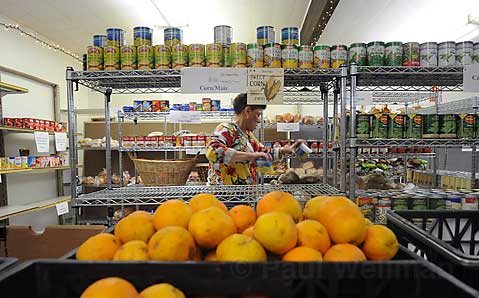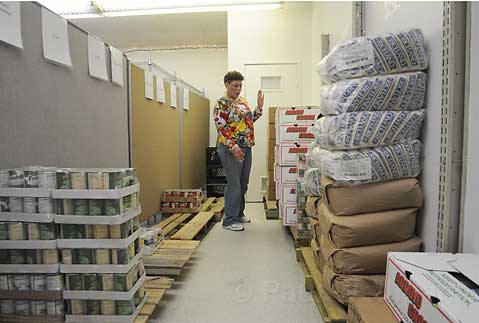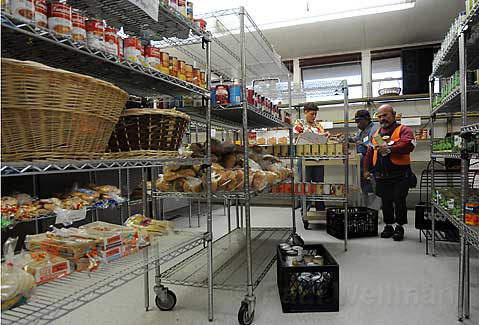Pantries, Food Stamp Programs See Rise in Clients
Tough Times, Bare Cupboards

The effects of the nation’s yearlong recession are trickling down to refrigerators and kitchen cupboards in a number of Santa Barbara homes. Applications for food stamps have risen 20 percent in the last six months, Santa Barbara County Social Services director Kathy Gallagher said, and all area food pantries are seeing similar increases in the demand for free food.
At Catholic Charities’ Haley Street food pantry on February 17, 36-year-old Maria, a professional caregiver who did not want her last name used, was in line for free produce, bread, canned goods, and (she hoped) fresh poultry as well. “I used to work 12 hours a day, five days a week, so I had plenty of work and plenty of money. Now, I work three hours a day, five days a week,” she said, adding that she still needed to pay bus fare to and from work. In November, Maria qualified to come to the pantry once a week, and she said it’s been a big help. “Even if they don’t give you what you really need, it still helps. Bread is really expensive.”

Catholic Charities-whose clients must meet certain qualifications, including a low-income threshold-has seen a 33 percent rise in the number of visits from last year, said program director Brian Clark. Where 460 people came through in the last week of January 2008, 615 people came through during the same week this year. Clark said volunteers were buying food from grocery stores to keep merchandise on the shelves. Its stock room hasn’t been full since last spring, when the United States Postal Service delivered food from its annual “Stamp Out Hunger” food drive.
At the Unity Shoppe, demand for food in 2008 was up 18 percent from 2007, said Elvira Avina, administrative director. In 2007, 16,330 families qualified to visit the pantry once a week for groceries, clothes and, school supplies. In 2008, close to 20,000 people qualified. Furthermore, Avina said people were visiting more often. She recalled that over the holidays, a county employee just coming off maternity leave even qualified. Her husband’s hours were cut at the same time the furlough hit. Avina also said that 67 percent of Unity Shoppe clients have at least one employed household member.

Last October, 1,473 people applied for the Federal-State-County Food Stamp Program, Gallagher said. But in October 2007, only 913 people applied. “We’ve seen a lot of people who were heretofore middle-class coming in to apply. But they still have property. They’ve been laid off, but they still have a boat [for example]. You really do have to be fairly destitute to qualify,” she said. Of the 1,473 who applied last October, 482 were denied.
Foodland grocery store accountant Renuka Degambada said she’d noticed the increase in people paying with Food Stamp Program cards since last year. But the manager at the Chapala Street Vons hadn’t noticed an increase. A spokesperson from the Albertsons corporate office was unable respond to Food Stamp questions by press time.
The Santa Barbara County Foodbank, which provides the bulk of food to pantries, soup kitchens, and other organizations available to low-income residents, said a recent survey of its 220 agencies revealed a 25-percent average increase in food demand. Erin Muma, Foodbank program manager, said agencies’ clientele now includes more working poor-low-income families with at least one employed adult.
Back at Catholic Charities on Tuesday morning, when the greatest variety of food is available, four people milled in the aisles placing food in green shopping baskets while six others stood in a line for a turn. Don Ebbert, a 60-year-old disabled vet who has used the pantry since 2005, was among the shoppers. When asked if he’d noticed more people availing themselves of the program, he said yes. “No doubt. How about three-fold? I assume it’s because things are getting really tight,” he said.



